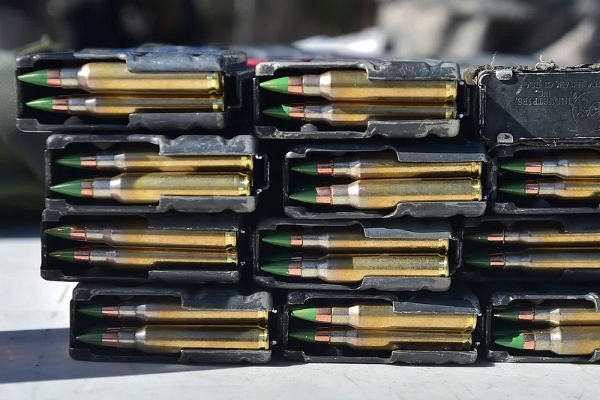Gun control activists are nothing if not adaptive.
When legislative efforts to ban guns stall, they look for new angles. And increasingly, the gun control lobby — with help from federal dollars — has found a powerful new weapon: your state’s “public health” agencies.
The playbook is simple: reframe “gun violence” as a public health crisis, fund research to support this framing, and use the resulting studies to justify sweeping restrictions on gun ownership. It’s not an accident… It’s a coordinated strategy that’s accelerating in state after state, in hopes that they can build a monopoly on the “infrastructure of information” in the Second Amendment fight.
Here’s how it works, why it matters, and what gun owners need to know.
The Federal Money Pipeline Behind “Gun Violence” Research
For decades, federal agencies were largely prohibited from using taxpayer dollars to promote gun control through “research.” A 1996 amendment by Rep. Jay Dickey (R-AR), known as the Dickey Amendment, prevented the Centers for Disease Control and Prevention (CDC) from funding studies “to advocate or promote gun control.”
But in 2018, that dam broke.
Congress quietly added $25 million to the CDC and NIH budgets for “gun violence research,” and that number has only grown since. The CDC’s 2024 budget requests $60 million per year for such research.
Federal funding now fuels a vast ecosystem of university departments, think tanks, and “public health” organizations that study firearms through a narrow lens: how to justify more restrictions.
And while the Dickey Amendment technically remains in place, the CDC has admitted it’s now interpreted so broadly that little stands in the way of activist-driven studies fueled by your tax dollars.
How State Bureaucrats Turn Studies Into Policy
The next step is what happens at the state level.
Armed with CDC-backed studies and a growing narrative that gun violence is a “public health crisis,” state public health departments are quietly stepping into the gun control arena.
Consider these recent examples:
Washington State
In 2023, the Washington State Department of Health published a report calling for a public health approach to gun violence, recommending:
- Safe storage mandates
- Mandatory reporting of lost and stolen guns
- Expanded Extreme Risk Protection Orders (better known as “Red Flag” Gun Confiscation laws)
- A statewide firearm licensing system
These recommendations mirror the wish list of national gun control groups like Everytown and Giffords… and they’re now being cited in legislative debates in Olympia.
California
California’s Department of Public Health is collaborating with the University of California’s Firearm Violence Research Center (funded with millions in state money) to push similar recommendations, including expanded “assault weapon” bans and restrictions on home-built firearms.
Governor Gavin Newsom has openly embraced this framing, declaring gun violence a public health epidemic in 2022.
Colorado
In 2024, Colorado’s legislature considered HB24-1353, a bill creating an Office of Gun Violence Prevention inside the state Department of Public Health and Environment (CDPHE). The office is empowered to:
- Distribute millions in grants to anti-gun groups
- Conduct media campaigns promoting “gun safety” laws
- Collect data on gun ownership and use
The bill passed and is now law, giving unelected bureaucrats a taxpayer-funded megaphone to advance gun control and attempt to sway public opinion.
How They Weaponize Taxpayer-Funded Studies Against Gun Owners
The ultimate goal of this “public health” strategy is not neutral research — it’s ammunition for the gun control lobby.
Gun control advocates and allied state bureaucrats frequently distort taxpayer-funded studies to promote their agenda in legislatures, the media, and the courts. Here’s how:
Inflated “Child Gun Death” Statistics
One of the most common tricks is manipulating the age ranges used in these studies to inflate “child firearm death” numbers.
For example, a 2022 CDC-funded study on firearm mortality repeatedly cited “children and adolescents aged 0–19,” even though 18- and 19-year-olds are legal adults in nearly every context, and most firearm-related deaths in that group involve criminal activity among older teens and young adults.
Many studies go even further, classifying “children” as ages 0–23 to drive up the headline numbers. This sleight of hand allows anti-gun groups and media outlets to falsely claim that “guns are the leading cause of death among children,” a phrase you’ve no doubt seen splashed across headlines.
But the real data tells a different story: firearm-related deaths among actual children (0-12) are relatively rare, and overwhelmingly the result of criminal misuse, not lawful gun ownership.
Using Studies to Justify Gun Control Bills
Once these studies are published, state public health agencies and gun control groups cite them endlessly to demand new restrictions.
Some recent examples:
- In California, CDC-funded studies on firearm suicide have been used to argue for expanded “Red Flag” laws and mandatory waiting periods for all gun purchases.
- In New Jersey, public health officials cited “youth gun violence” studies (with the inflated age ranges noted above) to push through new handgun purchase permits and microstamping mandates.
- In Washington State, public health reports calling gun violence a “crisis” were used to support bans on so-called assault weapons and 10-round magazine limits — even though the state’s own data showed rifles of all kinds are used in only a tiny fraction of homicides.
- In Colorado, lawmakers cited public health studies to justify creating the new state Office of Gun Violence Prevention — an office now empowered to fund anti-gun groups with taxpayer money.
The Cycle of Bias
This process creates a self-reinforcing cycle:
- Federal and state money funds studies explicitly framed around “gun violence prevention.”
- The studies inflate numbers and use biased language to imply widespread risk from gun ownership.
- State bureaucrats and advocacy groups cite these studies to demand new restrictions.
- New laws get passed, which are then studied by the same public health researchers, who advocate for even more restrictions based on “insufficient progress.”
It’s an activist feedback loop, not objective science.
The Real Agenda: Circumventing Your Rights
Why are gun control advocates so eager to label firearms a “public health” issue?
Because it opens the door to bypass the normal democratic process.
Public health agencies can:
- Issue emergency declarations (as New Mexico Governor Michelle Lujan Grisham attempted last year when she suspended open and concealed carry in Albuquerque)
- Pressure private companies to restrict gun sales or advertising
- Push state and local officials to adopt new regulations outside the legislature
In short, it allows gun control to advance through the bureaucracy, even in states where pro-gun majorities control the legislature.
The Bottom Line for Gun Owners
Gun owners should take this threat seriously.
Labeling guns a public health crisis is not about finding solutions to crime. It’s about building the justification for more restrictions, more surveillance, and ultimately, fewer rights.
And it’s being fueled by your tax dollars.
The National Association for Gun Rights will continue to fight these schemes at the statehouse, in the courts, and in the court of public opinion. But every gun owner should stay vigilant.
When you hear the words “public health” and “gun violence” in the same sentence, understand what’s really going on… your tax dollars are likely working against your freedoms.
About the Author
Taylor Rhodes is the Director of Communications at the National Association for Gun Rights. A seasoned political strategist and unapologetic defender of the Second Amendment, Taylor has led high-impact campaigns at both the state and national levels. He lives in Hoover, Alabama with his wife, Madison, and enjoys bourbon, golf, and collecting firearms—especially his 12.5” Geissele Super Duty.




